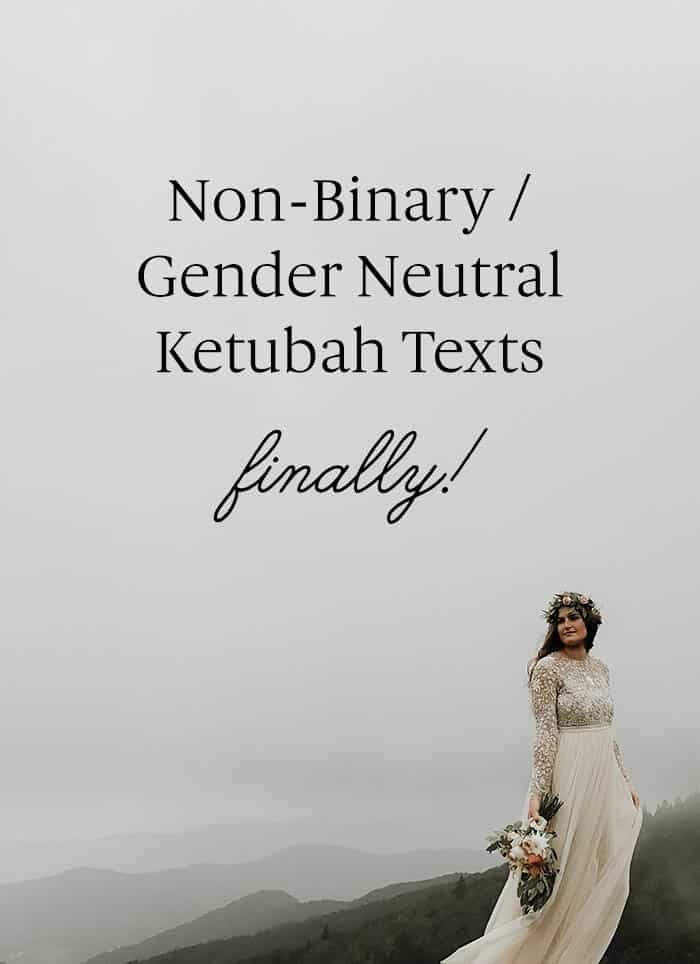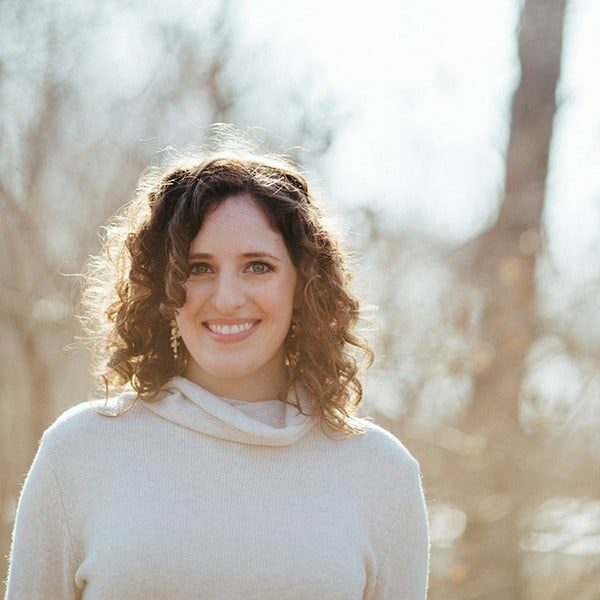Been looking for a gender-neutral ketubah text?

If you or your partner identify as non-binary, I’m guessing there’s a lot about the wedding planning process that’s…maybe less than ideal. And while I would hope that every wedding vendor is continually taking steps towards the day when all our clients feel affirmed while wedding planning, things can be slow to change.
It was a year ago that I was approached by my first client who identifies as non-binary. They had been looking for a gender-neutral ketubah text that worked for them, and had been coming up short. “No problem!” I thought to myself. “How hard could it be to take one of my texts and make it work for a non-binary client?” It turned out…very hard.
You see, Hebrew is an innately gendered language. Every noun is ascribed a gender, whether that be a person, object or creature. Verb tenses and words such as “each other” also have gender signifiers. This creates a challenging situation for our clients who identify as non-binary and who typically use they/them pronouns when communicating in English. In the past, the Hebrew language has used male pronouns as the default “gender-neutral” option. Which is…maybe not the most comfortable solution if you identify as non-binary?
Thus began a year-long process of looking for a better way to approach this. I spoke with Jewish LGBTQ+ organizations, many different translators, and folks in the LGBTQ+ community who were familiar with Hebrew grammar. And these wonderful folks helped us to come up with a ketubah text that employs a linguistic strategy emerging in the Hebrew-speaking LGBTQ+ community that affirms the identities of our non-binary clients. Yay!
If you’re interested in the details, I’m more than happy to dive in! Recently, the Hebrew-speaking LGBTQ+ community has begun using a plural in both gender forms added to a word to create a gender-neutral variation. When that particular solution doesn’t fit, it is also typical to default to female forms (perhaps in defiance of the assumption that male pronouns should be the default.) And, in instances where neither of those options work, the LGBTQ+ community sometimes alternates between the male and female forms. It’s important to note here that these language patterns are not typically accepted as “correct” grammar. If you are having a Rabbi officiate your wedding, it would be a great idea to loop them into the discussion of how to accurately reflect your two identities in your ketubah text so that the Rabbi isn’t confused by your grammatically non-conforming text.
So, this means that there are two exciting updates here at Ink with Intent. The first is that we now offer a gender-neutral ketubah text among our standard options. It was crafted by the talented Niva Kay and is appropriate for couples in which one or both people identify as non-binary. Yay! The second is that we can now also offer custom translations to our non-binary clients that actually affirm their identities.
Needless-to-say, I’m pretty excited.
One last note. Having this text out in the world and celebrating the full spectrum of identities is important to us. So you’re more than welcome to use it whether or not you want to purchase your ketubah here.
Have a great week, everyone!

Hello!
I'm Adriana Saipe, founder of Ink with Intent. I'm a full-time wedding illustrator who specializes in contemporary ketubahs and unique wedding certificates. Learn more.

Be the first to get special offers, updates from the studio, and more
CONNECT:


